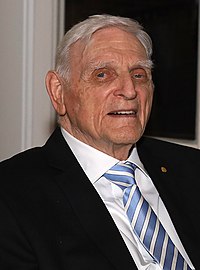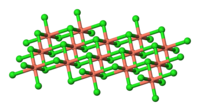
Structural and NMR spectroscopic studies of 2-phenylsulfanylpyridine and its analogues or derivatives, and their Au(III) chloride complexes
Sign Up to like & getrecommendations! Published in 2020 at "Inorganica Chimica Acta"
DOI: 10.1016/j.ica.2019.119182
Abstract: Abstract 2-Phenylsulfanylpyridine (1), its analogues 2-phenylsulfinylpyridine (2), 2-phenylselanylpyridine (3) and 2-phenylseleninylpyridine (4), as well as 4′-substituted derivatives (methyl-, tert-butyl-, bromo- and nitro-, i.e. 5–8) were characterized by 1H, 13C, 15N and 77Se NMR, including full… read more here.
Keywords: iii chloride; phenylsulfanylpyridine analogues; chloride complexes; nmr spectroscopic ... See more keywords

Structural Analysis of Magnesium Chloride Complexes in Dimethoxyethane Solutions in the Context of Mg Batteries Research
Sign Up to like & getrecommendations! Published in 2017 at "Journal of Physical Chemistry C"
DOI: 10.1021/acs.jpcc.7b05452
Abstract: Recently, MgTFSI2/MgCl2 electrolyte solutions in dimethoxyethane (DME) have been shown to function as viable electrolyte solutions for secondary Mg batteries that can facilitate reversible magnesium deposition/dissolution. MgCl2 is a crucial component in these solutions. On… read more here.
Keywords: analysis magnesium; chloride complexes; electrolyte solutions; magnesium ... See more keywords

Low dimensional and frustrated antiferromagnetic interactions in transition metal chloride complexes with simple amine ligands
Sign Up to like & getrecommendations! Published in 2019 at "CrystEngComm"
DOI: 10.1039/c8ce01901k
Abstract: New transition metal chloride complexes with hydrazinium and methylhydroxylamine ligands are reported featuring low dimensional and frustrated magnetic interactions. read more here.
Keywords: metal chloride; transition metal; dimensional frustrated; low dimensional ... See more keywords

In Situ Formation of Al(Fe)/Cl Metal Chloride Complexes and Evaluation of Their Catalytic Properties in the Reaction of Ethylene Oligomerization
Sign Up to like & getrecommendations! Published in 2017 at "Russian Journal of Applied Chemistry"
DOI: 10.1134/s1070427217120059
Abstract: According to FT-IR and UV spectroscopic data, the interaction of the Al/Fe alloy with tert-butyl chloride results in that AlCl4–, Al2Cl7–, and FeCl2+ ion complexes, Fe3+ ions, and AlCl3 molecular form are produced in situ… read more here.
Keywords: formation metal; situ formation; chloride complexes; chloride ... See more keywords

Substituent-Dependent Stimuli Recognition of Luminescent Gold(I) Chloride Complexes Based on Diarsenic Ligands
Sign Up to like & getrecommendations! Published in 2017 at "Bulletin of the Chemical Society of Japan"
DOI: 10.1246/bcsj.20170330
Abstract: Stimuli-responsive gold(I) chloride complexes were developed based on a diarsenic ligand, cis-1,4-dihydro-1,4-dimethyl-2,3,5,6-tetrakis(alchoxycarbonyl)-1,4-diarsinine (cis-DHDA). The crystals of the complexes showed intense luminescence due to the aurophilic interactions. Interestingly, methyl- and t-butyl substituted cis-DHDAs offered different stimuli-responsive… read more here.
Keywords: emission; chloride complexes; gold chloride; based diarsenic ... See more keywords